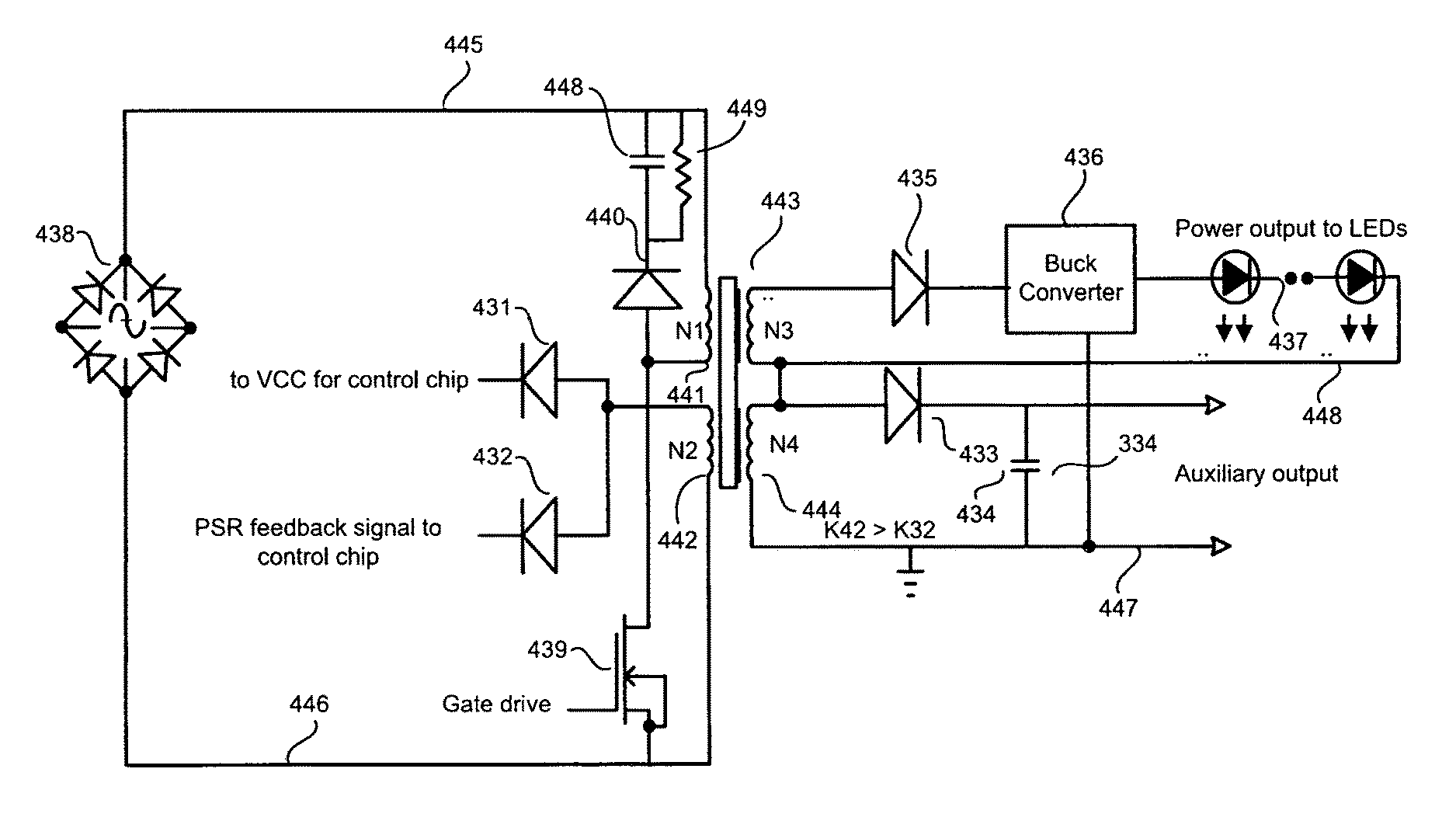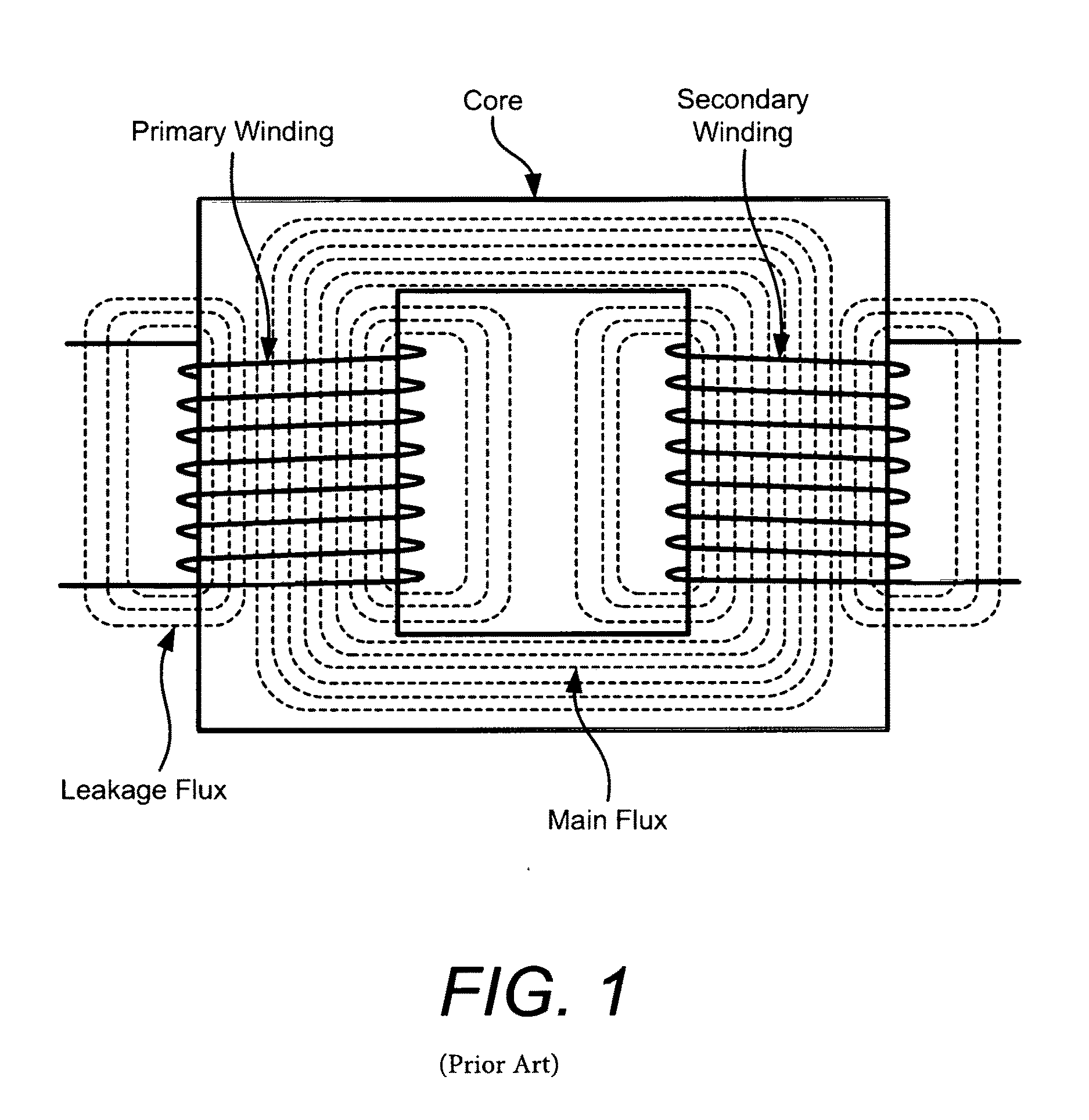LED Driver with Auxiliary Power Output
a technology of led drivers and auxiliary power, which is applied in the direction of electroluminescent light sources, semiconductor lamp usage, electric lighting sources, etc., can solve the problems of reducing the efficiency of the converter, the power factor and thd of the input current will become degraded, and the difficulty of simultaneously having high coupling coefficients between multiple windings, etc., to minimize good thd and power factor, and the effect of reducing the drop in output voltag
- Summary
- Abstract
- Description
- Claims
- Application Information
AI Technical Summary
Benefits of technology
Problems solved by technology
Method used
Image
Examples
Embodiment Construction
Glossary
[0073]PWM=pulse width modulation[0074]Mps=mutual inductance between primary and secondary windings[0075]PSR=primary side regulated[0076]AC=alternating current[0077]FET=field effect transistor[0078]LED=light emitting diode[0079]VCC=voltage common power supply[0080]THD=total harmonic distortion[0081]EE transformer=transformer using cores shaped like the letter E[0082]EI transformers=transformer using one E shaped core (E core) and one straight line core (I[0083]core)[0084]JFET=junction gate field-effect transistor[0085]IGBT=insulated-gate bipolar transistor[0086]AC / DC power converter=alternating current to direct current power converter
[0087]The operation of the preferred embodiment is shown in FIG. 4, which relates to prior art FIG. 3 in that corresponding parts have a call out number which begins with the digit 4 instead of the digit 3. In most respects this circuit resembles a conventional primary side regulated (PSR) flyback, but with critical differences which will be exp...
PUM
 Login to View More
Login to View More Abstract
Description
Claims
Application Information
 Login to View More
Login to View More - R&D
- Intellectual Property
- Life Sciences
- Materials
- Tech Scout
- Unparalleled Data Quality
- Higher Quality Content
- 60% Fewer Hallucinations
Browse by: Latest US Patents, China's latest patents, Technical Efficacy Thesaurus, Application Domain, Technology Topic, Popular Technical Reports.
© 2025 PatSnap. All rights reserved.Legal|Privacy policy|Modern Slavery Act Transparency Statement|Sitemap|About US| Contact US: help@patsnap.com



